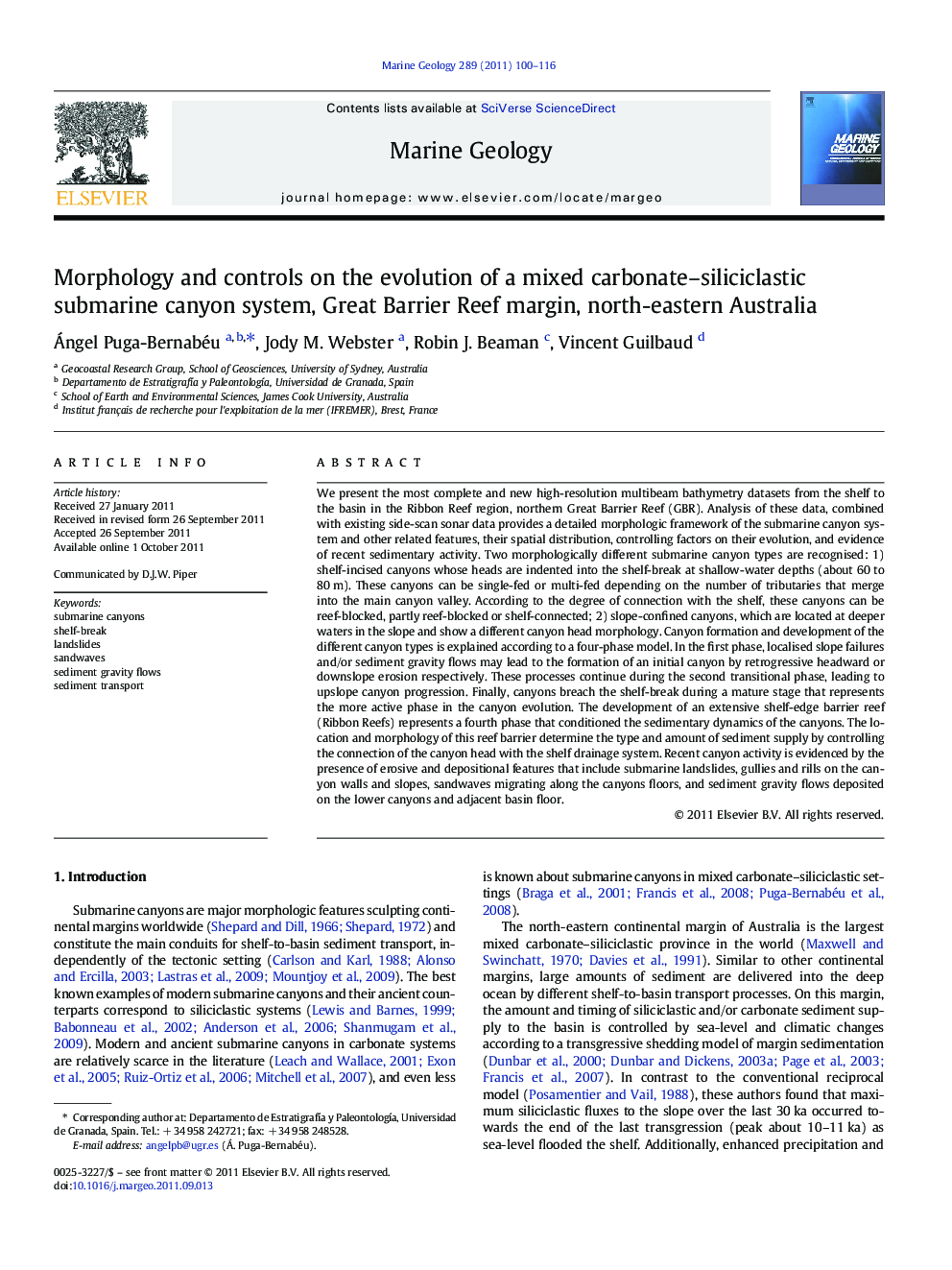| کد مقاله | کد نشریه | سال انتشار | مقاله انگلیسی | نسخه تمام متن |
|---|---|---|---|---|
| 4718686 | 1639131 | 2011 | 17 صفحه PDF | دانلود رایگان |

We present the most complete and new high-resolution multibeam bathymetry datasets from the shelf to the basin in the Ribbon Reef region, northern Great Barrier Reef (GBR). Analysis of these data, combined with existing side-scan sonar data provides a detailed morphologic framework of the submarine canyon system and other related features, their spatial distribution, controlling factors on their evolution, and evidence of recent sedimentary activity. Two morphologically different submarine canyon types are recognised: 1) shelf-incised canyons whose heads are indented into the shelf-break at shallow-water depths (about 60 to 80 m). These canyons can be single-fed or multi-fed depending on the number of tributaries that merge into the main canyon valley. According to the degree of connection with the shelf, these canyons can be reef-blocked, partly reef-blocked or shelf-connected; 2) slope-confined canyons, which are located at deeper waters in the slope and show a different canyon head morphology. Canyon formation and development of the different canyon types is explained according to a four-phase model. In the first phase, localised slope failures and/or sediment gravity flows may lead to the formation of an initial canyon by retrogressive headward or downslope erosion respectively. These processes continue during the second transitional phase, leading to upslope canyon progression. Finally, canyons breach the shelf-break during a mature stage that represents the more active phase in the canyon evolution. The development of an extensive shelf-edge barrier reef (Ribbon Reefs) represents a fourth phase that conditioned the sedimentary dynamics of the canyons. The location and morphology of this reef barrier determine the type and amount of sediment supply by controlling the connection of the canyon head with the shelf drainage system. Recent canyon activity is evidenced by the presence of erosive and depositional features that include submarine landslides, gullies and rills on the canyon walls and slopes, sandwaves migrating along the canyons floors, and sediment gravity flows deposited on the lower canyons and adjacent basin floor.
► Two morphologically different canyon types in the Ribbon Reef region.
► Origin and evolution of the canyons explained according to a four-phase model.
► Type and amount of sediment supply controlled by the morphology of the Ribbon Reefs.
► Canyon activity evidenced by landslides, sediment gravity flows, and sandwaves
Journal: Marine Geology - Volume 289, Issues 1–4, 1 November 2011, Pages 100–116